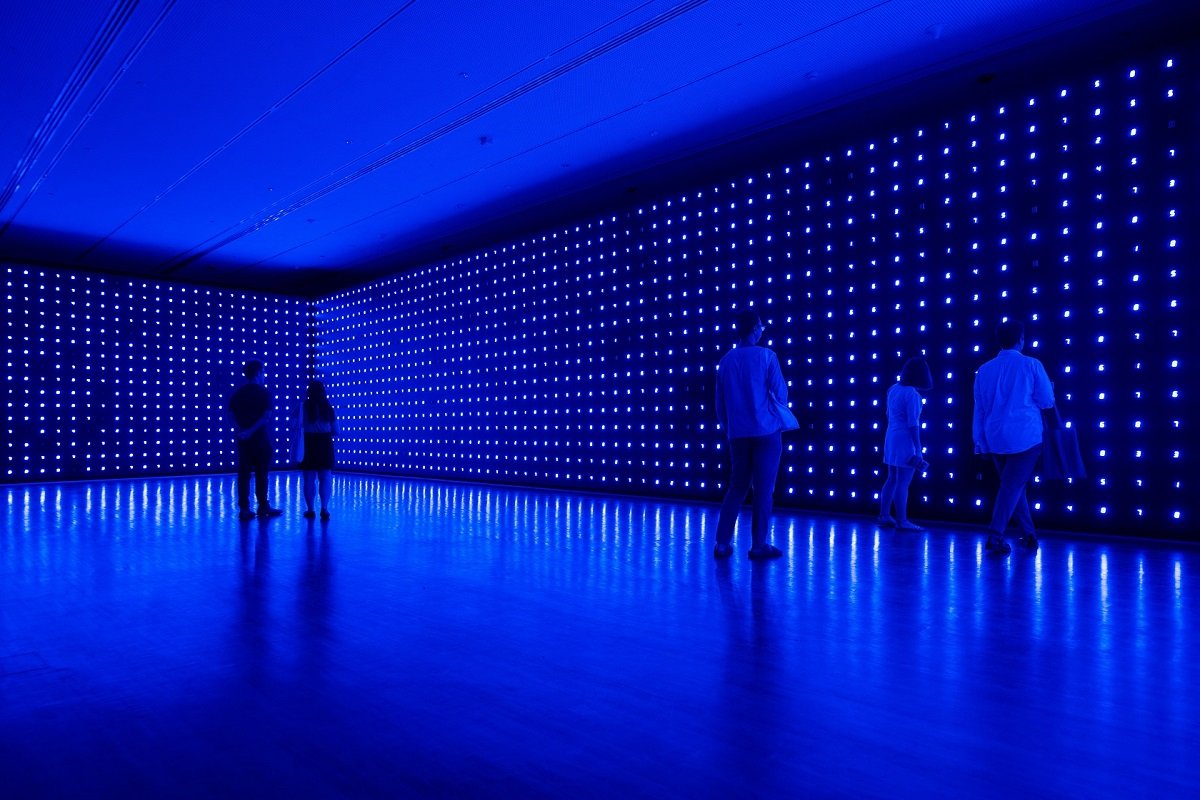My second visit to Minimalism at the National Gallery was guided by head curator Silke Schmickl who brought character and insight to the seemingly simple artworks on display. I will be discussing Tatsuo Miyajima’s Mega Death (1999), the first piece she brought us to see and coincidently also the first piece I experienced on my previous trip there.
We began by stepping into a room, lit by only the glow of a few hundred blue LED counters from panels that were mounted on three sides of the wall. They would count down at different speeds from 9 to 1, skipping 0, over and over. Though the room was silent, each counter made a little tick sound in my brain and they would overlap, leaving me in an almost meditative state, counting in my head together with the LEDs.

Miyajima was commissioned to do a piece that summed up the 20th century. It was a simple set up, but the artist had intended for the numbers to represent the Buddhist cycle of life. If you had read about the piece, you would know that these lights would completely shut off at one point (Silke informed us that it happens when a certain sensor is triggered), which he termed Mega Death, as though the cycle of life was abruptly broken. Miyajima wanted this break of darkness to recognise the great and instantaneous number of lives lost in the 20th century through wars and killings. He also wanted to show how we picked ourselves up and begun again when the lights came back on one at a time, counting backwards again.
Video at: https://archive.mca.com.au/miyajima/miyajima-artworks/mega-death/
The first time I visited, the lights blinded me in a starburst effect and I didn’t stay to experience the shut down – and missed the whole point of Mega Death. On the guided tour, perhaps it was the many feet of my classmates that triggered the sensor – mega death happened quite instantaneously after we entered. It was quite terrifying to be in the sudden blanket of darkness, even while knowing that it was supposed to happen. Put in context with the artist’s intentions in mind, this simple room with blue lights held substance and told a narrative.

I enjoyed how he attached life and death, something so universal, to simple LED counters and programming them to turn off. When the lights started turning back on, we noticed there was one glitching counter that counted forward instead, and this was somehow endearing to me and really humanised this digital piece of work and I could empathise with it. I guess there’s always something different you experience in a piece of work each time you visit it.
I guess in relation to the project we are working on, we can learn how to strip things down to their essence, to find a relatable point and tell the narrative through different manifestations that are not entirely understandable at first glance. In a way, it is what we are doing with Mee Pok Man by stripping away the actors and telling the narrative through the presence of the props in each scene.
Reference
https://tatsuomiyajima.com/work-projects/mega-death-3/
https://www.thesaturdaypaper.com.au/2016/11/26/artist-tatsuo-miyajima-and-mega-death/14800788004006
https://archive.mca.com.au/miyajima/miyajima-artworks/mega-death/

